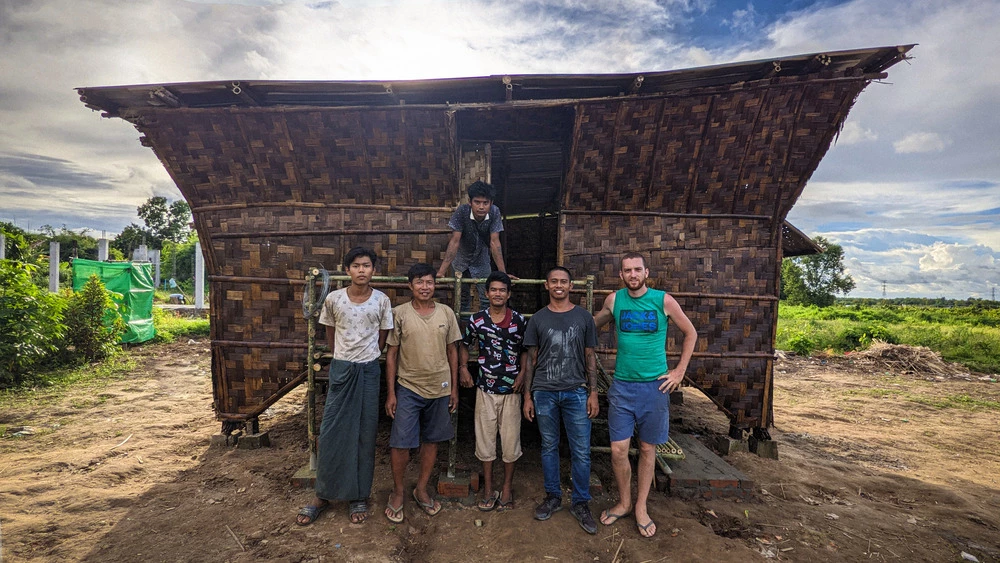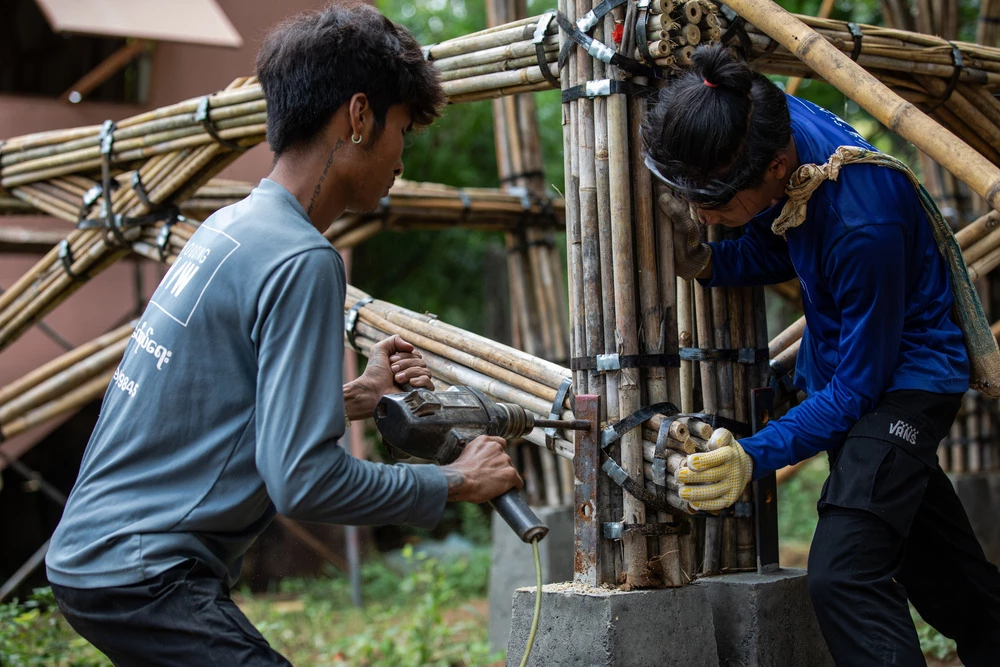In the heart of Mandalay, Burma, a small cluster of bamboo houses has become a symbol of resilience. When a 7.7-magnitude earthquake struck central Myanmar earlier this year, the ground around them split and buildings nearby collapsed. Yet 26 of these homes, designed and built by architectural studio Blue Temple, remained completely intact.
Created for families displaced by ongoing conflict, the modular houses are part of a long-term project known as Housing NOW.
Instead of relying on imported materials, the system uses bundled small-diameter bamboo, a resource that grows abundantly across the region. By tightly binding and interlocking the bamboo poles, Blue Temple’s team created a structural frame that distributes seismic loads evenly across the walls and roof. The technique draws on both local craftsmanship and digital design, to produce a frame that flexes during an earthquake.
Each bamboo home comes with a DIY manual, instructing users on how to assemble the structure in just seven days at a cost of around US$1,000 to $1,300. To build the home, family members can take part in putting together the module, guided by trained builders who ensure that all the components align precisely. The result is a home that can withstand both earthquakes and high winds, while remaining low-cost and easily repairable.

The design of the home features open walls that allow for natural ventilation, while raised flooring keeps the interior dry during heavy monsoon rains. The roof is made from lightweight panels, and the external façade can be customized with woven bamboo or timber, reflecting the traditions of each region.
To date, Blue Temple has completed 79 of these modular homes across Burma. The studio has also introduced a cash-for-shelter scheme, that supports families who wish to upgrade their existing bamboo houses with stronger frames and safer roofing systems.

Recognized by MIT Solve, the Good Energies Foundation, UNICEF Innovation30, and the Nikkei Asia Award, Blue Temple’s Housing NOW project highlights the structural potential of bamboo in humanitarian design. Its performance during the Mandalay earthquake reinforces the material’s role as both an affordable and resilient solution for communities in crisis.
Source: Blue Temple



















